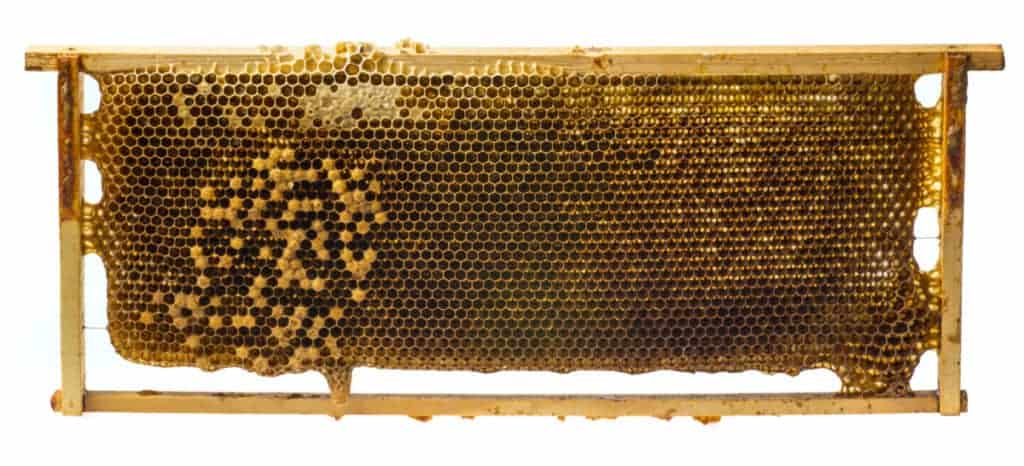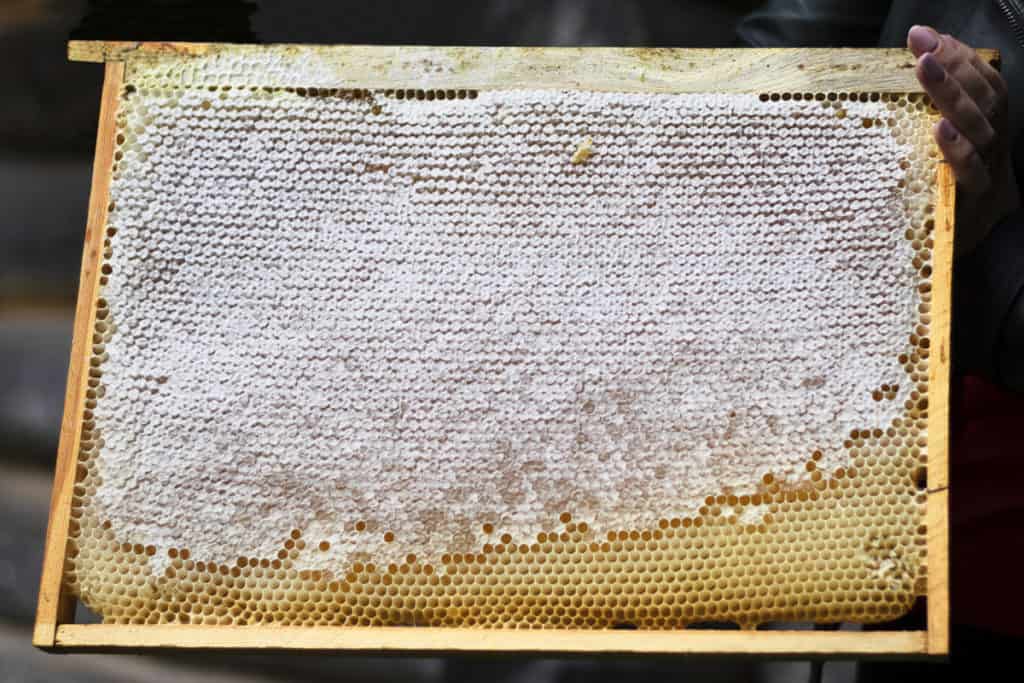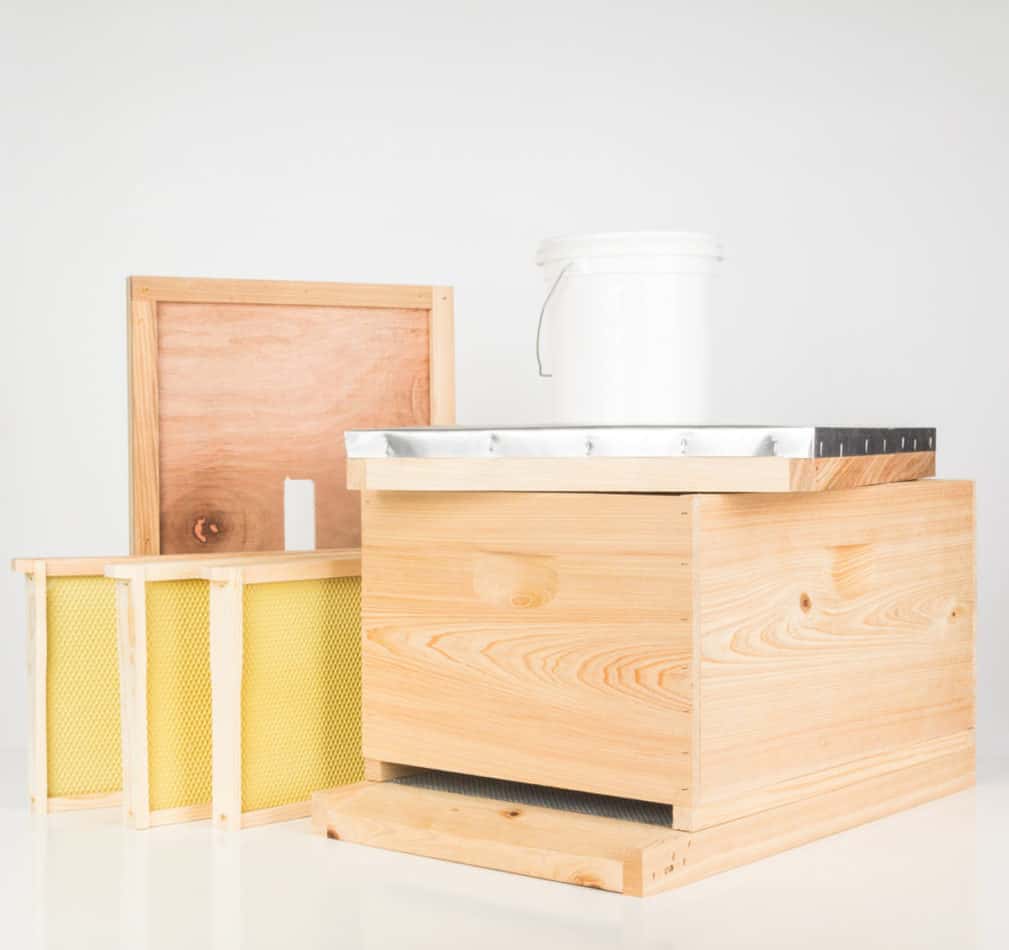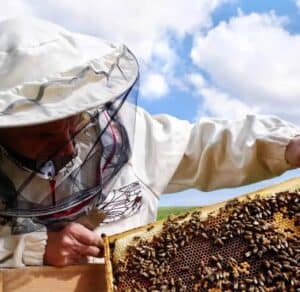What Is The Difference Between a Brood Box And a Super?
As I began my beekeeping journey, I found it very confusing to understand the different terms commonly used. Brood boxes and supers are commonly used to describe different parts of a beehive but are often poorly explained.
The difference between a “brood box” and a “super” is brood boxes are used by the queen to lay eggs called brood for raising new bees. A “super” is the hive box used to store a bee’s honey called a “honey super”. Also, “super” is a common term used to describe the actual hive body or beehive box.
It is surprising how many different ways a hive box is described by beekeepers. Whether it is being used to raise brood, for food stores, or for storing honey the hive body is often described in a variety of ways.
As a new beekeeper I found it difficult to keep all these terms straight so I will explain what the different hive bodies are and how they are commonly used.
The Difference Between Brood Boxes And Honey Supers

Let’s begin with a couple basic terms you should have a clear understanding of: a brood box and a honey super.
Brood Box – is only used for the queen to lay eggs and to store food for the raising of new bees. For strong bee colonies multiple brood boxes are often used to prevent swarming.
Honey Super or Honey Box – are only used for honey storage. These boxes are placed on top of the brood boxes with a queen excluder during a nectar or honey flow.
The queen is unable to enter the honey box, but the foraging bees can and will store their newly acquired nectar in the honey frames. The nectar is ultimately turned into delicious honey and harvested by the beekeeper.
Note: Never use frames from your brood boxes in your honey boxes because you do not want brood or larvae mixed in with your honey. Not only is it gross but if you’ve used treatment (for mites or disease) on your bees there could be residue left in the brood frames.

This is why different boxes and frames are used for honey storage and harvesting, especially if your selling your honey to consumers.

You can however take some of your older honey frames and use them in your brood boxes. But once you transition them from the honey box to brood box, you can never use those frames for honey production ever again.
This is commonly done for older honey frames that are no longer suitable for producing honey for public consumption.
And for information about brood boxes, hold up for just a bit, I wrote an article all about how long it takes bees to fill a brood box I encourage you to read!
To be clear, a brood box and a honey super is only describing the actual purpose of the specific “hive body” or beehive boxes, not the actual size or number of frames contained in the hive box.
This is where I, and most new beekeepers, would often get confused because a “super” is also a common term used by experienced beekeepers when referencing any type of “hive body” no matter it’s size or dimensions.
Some beekeepers will call all their beehive boxes supers for instance: deep brood box super, medium brood box super, deep honey box super or medium honey box super, etc. Well you get the idea!
This becomes confusing to a new beekeeper because they don’t necessarily understand the different size of boxes being referenced. Especially when a beekeeper simply states they are adding “honey super’s”.
They could be referencing deep boxes, medium boxes or shallow sized beehives. To add to this confusion, medium size boxes that were invented by Dadant Company are commonly called “supers”.
The Langstroth Beehive Design And Dimensions

There is several different standard beehive sizes used for beekeeping. The most popular is the beehive invented and patented in 1852 by Rev. L. L. Langstroth. This has become the standard 10 frame deep beehive used by most beekeepers.
Over the years several other common beehive sizes were invented with the same expansive design as the Langstroth. These are called Mediums or Illinois Supers, Shallows, and woodenware that supports 8 frames rather than 10 frames.
There is also 5 frame equipment, called NUC’s (Nucleus colonies) that are used to start new colonies or to sell bees.
I’ve included several charts below with the different dimensions of each of these hive bodies.
| Standard 10 Frame Hive Body | Length | Width | Height |
|---|---|---|---|
| Deep Body – Langstroth Hive | 19 7/8″ | 16 1/4″ | 9 5/8″ |
| Mediums or Illinois Super | 19 7/8″ | 16 1/4″ | 6 5/8″ |
| Shallows | 19 7/8″ | 16 1/4″ | 5 3/4″ |
| Standard 8 Frame Hive Body | Length | Width | Height |
|---|---|---|---|
| Deep Body | 19 7/8″ | 13 3/4″ | 9 5/8″ |
| Mediums or Illinois Super | 19 7/8″ | 13 3/4″ | 6 5/8″ |
| Shallows | 19 7/8″ | 13 3/4″ | 5 3/4″ |
| Standard 5 Frame NUC’s | Length | Width | Height |
|---|---|---|---|
| Deep Body – most common | 19 7/8″ | 9 1/4″ | 9 5/8″ |
| Mediums or Illinois Super | 19 7/8″ | 9 1/4″ | 6 5/8″ |
Small and large commercial beekeeping operations pretty much exclusively use 10 frame deeps for all of their equipment. They are used because each box and frame will hold more honey and there are less frames to be handled and harvested from.
This also reduces the cost of required equipment since less woodenware is needed to harvest the same amount honey as opposed to using Mediums or Shallow’s.
The disadvantage of 10 frame deeps is that they are very heavy to handle on a regular basis. But most commercial operations have expensive equipment for moving heavy bee boxes safely and efficiently.
For hobbyist’s and backyard beekeepers Mediums, Shallows and 8 frame equipment is more commonly used. These bee boxes are smaller and easier to handle for a person who does not have expensive beekeeping equipment.
Your back will thank you as well! Beekeeping can be awfully hard on your body, moving and handling beehives all day.
Note: I would recommend not mixing and matching your equipment. Make a choice and just stick with it. For example, you don’t want to be mixing deeps and medium hive boxes since they both have different size frames.
There are several other beehive designs that are commonly used but mostly by hobbyists and small beekeeping operations such as: Warre beehives, Top Bar beehives (TBH), Apimaye insulated hives, and Flow hives.
Related Questions
How Close Can Beehives Be To Each Other? It is recommended to place your hives at least two feet apart. This is no hard and fast rule, but it does make it easier for inspecting your hives and if you agitate one hive, you’re less likely to agitate the other hives if they’re not located close together.
Will You Get Stung While Wearing A Bee Suit? No matter how careful you are, or what you wear, if your working bees you will get stung. A bee suit offers you good protection against stings, but it’s not sting proof only sting resistant. Although, it is better than getting a full unprotected sting.
Is There a Best Direction To Face a Beehive? Bees do not care what direction their hive is facing. Bees in the wild have not demonstrated a statistical preference when choosing one direction for the front of their hives. Bees are flexible and will adjust to their environment.
When Is The Best Time Of Day To Inspect a Beehive? The best time to inspect your hives is on calm, warm and sunny day between 11am and 4pm. The forager bees will be out working rather than guarding the hive. Flying bees are happy bees.

Joseph Davis
My goal is to show that anyone can take up beekeeping and it can be a very rewarding hobby. I strive to share my experiences and answer any questions you may have.
